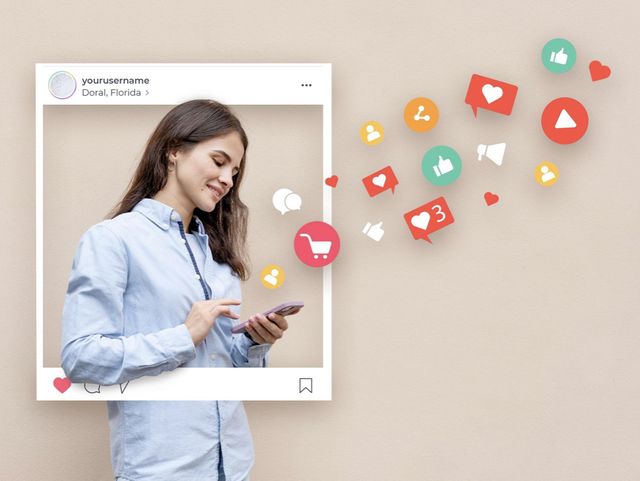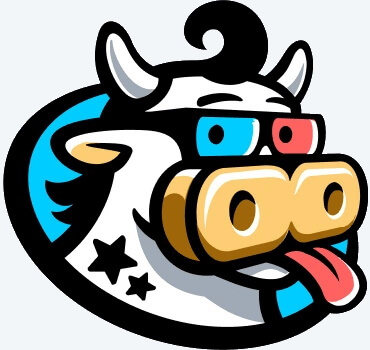Algorithm-friendly Approaches on How to Get More Likes on Instagram
- Category: Pics |
- 17 Nov, 2023 |
- Views: 581 |
Would you like to discover more about how to enhance the reach of your publications on the Instagram social network without a need to purchase Instagram likes? Do you want to know more about how to beat Instagram's algorithm? We invite you to read the following post about applying algorithms to manage your Instagram profile and achieve greater reach and interactions.

How Instagram's Algorithm Works
Making your profile work as another marketing channel within your business model is a task that requires planning and study. More is needed to upload a nice photo. The platform has moved to the side of social media strategy with algorithms.
Long gone are the days when Instagram posts were placed in chronological order. Now, we find "one of those" algorithms we love. Everything that has a search engine is susceptible to optimization, which is what we will talk about in this post.
Retrieve all Content for Display
Initially, Instagram retrieves all recent Instagram posts posted by users' accounts. In addition to this content, the platform will also select ads that might be of interest. In the case of the News Feed, it will also select publications posted with hashtags that the user follows.
This means that on the Instagram feed, content creators compete with the follower's friends, other content creators, and advertisers who pay for Instagram to display their content first to boost engagement.
Analyze Signals to Determine the Most Relevant Content
In the second step, Instagram analyzes thousands of signals collected about the publication, the author of the publication, and the other users. Instagram's CEO identifies 4 groups of signals that the News Feed algorithm takes into account. He ranks them in order of importance:
Publication Characteristics
The most important type of signal in the News Feed and Stories algorithm is the one that groups the characteristics of a publication. These include signals such as:
• Video format: image or video posts.
• The popularity of the publication is measured by the number of likes of new followers registered on the publication.
• Publication date. We prioritize the most recent publications.
• The length of the publication if it's creative video content.
• The geolocation of the publication if the author has added a location.
• The theme of the publication is to understand what it's about.
Information on the Author of the Publication
The second group of signals relates to the identity of the person who published the content and the type of Instagram content they posted.
On the one hand, Instagram's strategy determines whether the type of content might interest the user. On the other, it counts the number of times Instagram followers have interacted with the publication's author in recent weeks. In other words, the popularity of the publication's author is also important. Partnering with a brand messaging strategist can help amplify your authority and craft messages that resonate with your audience, enhancing your reach and influence.
User Activity History
Next, Platform analyzes each habit of the target audience to learn more about their areas of interest. Instagram will use the user's past behavior to understand their interests. Among the signals about a user's activity and peak engagement times, Instagram takes into account:
• Publications that the user has liked, saved, or commented on to understand the format (image, videos, etc.) and collaboration posts.
• Publications with which they have interacted on the Explore page, once again, to understand their interests.
• How often do they use the Instagram app? We'll prioritize the most relevant publications since their last visit. As a result, people who use Instagram more frequently might see more recent content than those who check their profile infrequently.
• The number of accounts they follow. The more accounts a user subscribes to, the more likely they'll only see a fraction of the Instagram posts aimed at them, as Instagram has much more content. In this case, Instagram has to choose from more publications to select the most relevant. Conversely, those who subscribe to a few accounts are likelier to see all the content of the people they follow. The competition in their News Feed is less fierce for the latter because they need to follow more Instagram accounts.
• Time spent on the application. People who are used to spending less time on Instagram see fewer publications than others. Therefore, the algorithm works harder to offer them high-quality content to keep them active on the platform for longer.
Getting More Likes on Instagram by Exploring the Degree of Affinity
The final group of signals that the platform takes into account are those that determine the degree of affinity between the author of the publication and the users' explore pages.
Instagram prioritizes posts from accounts with which the user has the most affinity, i.e. those with which he interacts most often. These are the accounts whose publications they've liked, those with whom they've exchanged comments or private messages, etc., over the past few weeks.
The stronger the relationship between two accounts, the more often Instagram will show them their respective content. However, the algorithm will also ensure that only a few of an account's publications are displayed one after the other with more visibility.

Instagram Algorithm: the Algorithm that Brings us Upside Down
Thanks to this algorithm, what happens is that your feed is organized according to the interactions you make with the accounts you follow on your Instagram profile. If you follow 10 accounts and only interact with 3 of them, the content of these 3 accounts will be shown first.
In addition, the composition of the Instagram feed will also depend on that interaction. It will not only show those accounts in the first place, but you will see them more than once throughout your feed.
Haven't you ever looked at your feed and seen more than one Instagram post from an account you follow? That's why it is convenient to specify one thing before we get down to business.
Selling on Social Networks
What is an interaction on Instagram? We usually think of Instagram likes, hearts, comments, or saves when we talk about interaction. We will also add the private messages you exchange with different Instagram accounts. This algorithm also considers the interaction with the accounts that you search for.
It is even considered a relevant factor for interaction with the accounts that correspond to people you know. That is to say, no. The universe is not trying to tell you anything.
Some social media craters go overboard when posting the latest trends during prime time. Legend has it that the average Instagram user comes across a piece of content on this social network at least twice a day, discussing the best time to post videos on social networks.
Instagram likes
But of course...for more exposure, we need to find out because we are multiscreen and with the same ones we scroll through the network, we also piddle around on Facebook. What we mean by this is that this algorithm prioritizes our content because we do not publish when more relevant users are connected. That's why it organizes us based on our relationship with the accounts.
How to Get More Likes on Instagram Using Statistics
As we were commenting, knowing the best time to post on different social networks has spilled rivers of bits. Although it is better to be approximately right than 100% wrong, the ideal is to analyze your Instagram account to know when your readers are most connected.
To know this data, we will use two very interesting tools: statistics and external tools (such as Metricool). To access Instagram statistics, you need to have a company account. It is the only way to have information about the performance of our Instagram presence.
Within Instagram settings, we find a section called "statistics", which will give us Instagram insights about the users who follow us, their ages, their locations, the days of the week in which there are more users connected, and the hours of these days in which there are more connections.
These data are weekly, and if we want to keep track of Instagram engagement and control it, we must take them every week. Metricool offers us much more detailed information on the behavior of our account and many more visuals when it comes to knowing the hours of the greatest connections.
The Best Way to Get Likes on Instagram is to Reply as Soon as Possible
On the internet, the waiting time is shortened and tends to zero with some free stuff. That is why taking advantage of the time that a person has left you is useful to encourage conversation and thus increase the rate of interaction with your publication. Instagram stories also have an algorithm to get more followers.
One of the benefits for brands of using stories is that it encourages more engagement between consumers and the company. Every contact is a sales opportunity for an Instagram business account. Recommendations for getting the best out of Instagram stories:
• Always upload stories in an optimized way: include the location, thus favoring your local visibility for your target audience.
• Use relevant hashtags in each story to increase its reach. We can use up to 10 hashtags in the stories to maximize the diffusion.
• Mention your account; in this way, you are favoring that if someone does not follow you, they will do it.
• Use stickers with questions that encourage conversations with your story to create maximum engagement.
• Tell stories in the stories, and point out the beginning and the end to know when it ends.
• Use some of the answers to the stories with questions as new content for your stories.
• Generate conversations with other accounts, tagging them in your stories with trending hashtags.

How to Get More Likes on Instagram with Hashtags
We can use the hashtag strategy using the Instagram tool; from its search engine, it will tell us the number of publications that have each hashtag related to the word we have entered.
We can also use mobile applications like Lettags or web applications like Display Purposes. In the same way that we collect in Excel all our information related to the keywords we will use in our SEO strategy, it is useful to do the same with the brand hashtags we will use in our strategy.
The categories we use can be each of the services or products we offer, and we group the hashtags by typology:
• Trending Hashtags: those corresponding to a trending movement such as #metoo or the Oscars.
• Professional Niche Hashtags: those related to the activity we develop.
• Community Hashtags: #igers or book lovers.
• Brand Hashtags: related to the brands we work with or that serve to identify our company's brand values.
• Own Hashtags: those that we invent and use to generate our own identity, different from the rest of the companies in our sector.
Instagram Algorithms are Necessary to Manage the Platform
The first thing to remember about the Instagram algorithm is that there isn't just one but several algorithms that Instagram uses to determine the content they prioritize for their users.
The algorithms aim to keep Instagram users on the app as long as possible by offering them the most relevant content. The longer users stay on the platform, the more ads Instagram can offer them to boost sales.
There are several algorithms for managing content on Instagram, but also for other less visible parts, such as managing spam. And there's also an algorithm for the shopping page.

